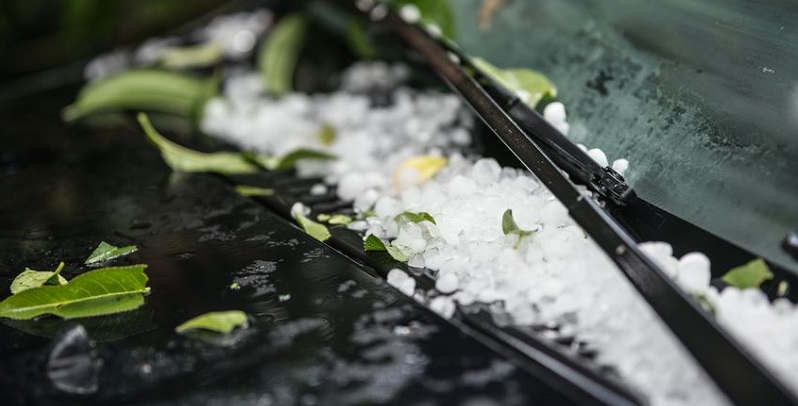A year after a 2017 hail storm caused $2.3 billion in insured auto and home losses, a new round of storms has caused untold thousands of more claims.
Falling Skies Becoming More Frequent, Costly
Colorado has a greater tendency to see hailstorms because the state’s high elevation puts it nearer to the sky’s freezing altitudes. Winds don’t have to push the moist air and ice as winds in other places do, and because of the shorter distance, the ice here has less time to melt as it falls to earth. As a result, citizens must beware of insurance prices and rising premiums.
The state’s recent rash of hailstorms brought softball-sized hailstones to El Paso County and Colorado Springs. Ice storms across the state injured at least eight people standing outdoors, caused car accidents, and killed several animals at the Cheyenne zoo, according to news reports. You are paying the costs as all of that dented sheet metal and broken glass inevitably bring higher automotive insurance costs.
Geography makes Colorado one of the places in the world most-susceptible to be pelted with ice from above, meteorologist Chris Bianchi wrote for The Associated Press. Hail forms when rising winds mix with warm, moisture-rich air. Updrafts push droplets up to elevations so cold that it forms falling ice. Continuing updrafts as strong as 98 mph push those frozen drops back where they become coated in more layers of ice and form hail storms. Stronger winds are able to push the ice aloft longer, forming larger, damage-causing balls of ice.
Weather Disturbances More Frequent
Colorado’s hailstorms are becoming more frequent and severe, which will likely cause higher insurance premiums, according to KRDO TV reporter Scott Harrison. The severe hailstorm that hit Southwest Colorado Springs and Fountain on Aug. 6 was the third one to pound that area this summer.
By the morning of Aug. 8, USAA insurance had already counted 11,500 claims from the latest storm; State Farm reported 4,200 claims, Harrison reported. The insurance companies set up mobile catastrophe centers in spots across the area to handle the repeated claims.
Even before this summer, Colorado ranked second in the United States for the number of hail damage claims and third for the rate at which those claims increased, Carole Walker of the Rocky Mountain Insurance Information Association told the television station. Victims of multiple hail storms might be frustrated because the claims from separate storms are handled separately, and insured motorists will have to pay their policy’s deductible for each claim they file.
A Growing Effect on Insurance Rates
The greatest damage may be in the form of higher insurance premiums for Colorado drivers. Colorado’s auto insurance rates rose 54.2 percent, on average, between 2011 and 2017. Then, an average Colorado driver was paying an average annual car insurance premium of $1,435 per year, according to the 2018 Zebra State of Auto Insurance Report.
Those rates were quoted before a massive hailstorm hit the state on May 8, 2017, causing nearly $2.3 billion in home and auto damage, about $900 million more than first estimated as homeowners’ claims continued to come in, according to reporting by The Denver Post. The claims comprised of about 167,000 auto insurance claims costing approximately $710 million, and 100,600 homeowners policy claims.
Walker, the insurance industry spokeswoman, said that even before the recent hail storms, Colorado insurers had counted $500 million in losses to homes and autos in 2018. As the combined fire and hail season continued, she expected claims to reach $1 billion before the year’s end.
“It’s a new normal for Colorado…more storms, larger hail, more damage,” Walker said. “In this latest storm, we’ve already heard that up to half of the damaged cars will be total losses.”

